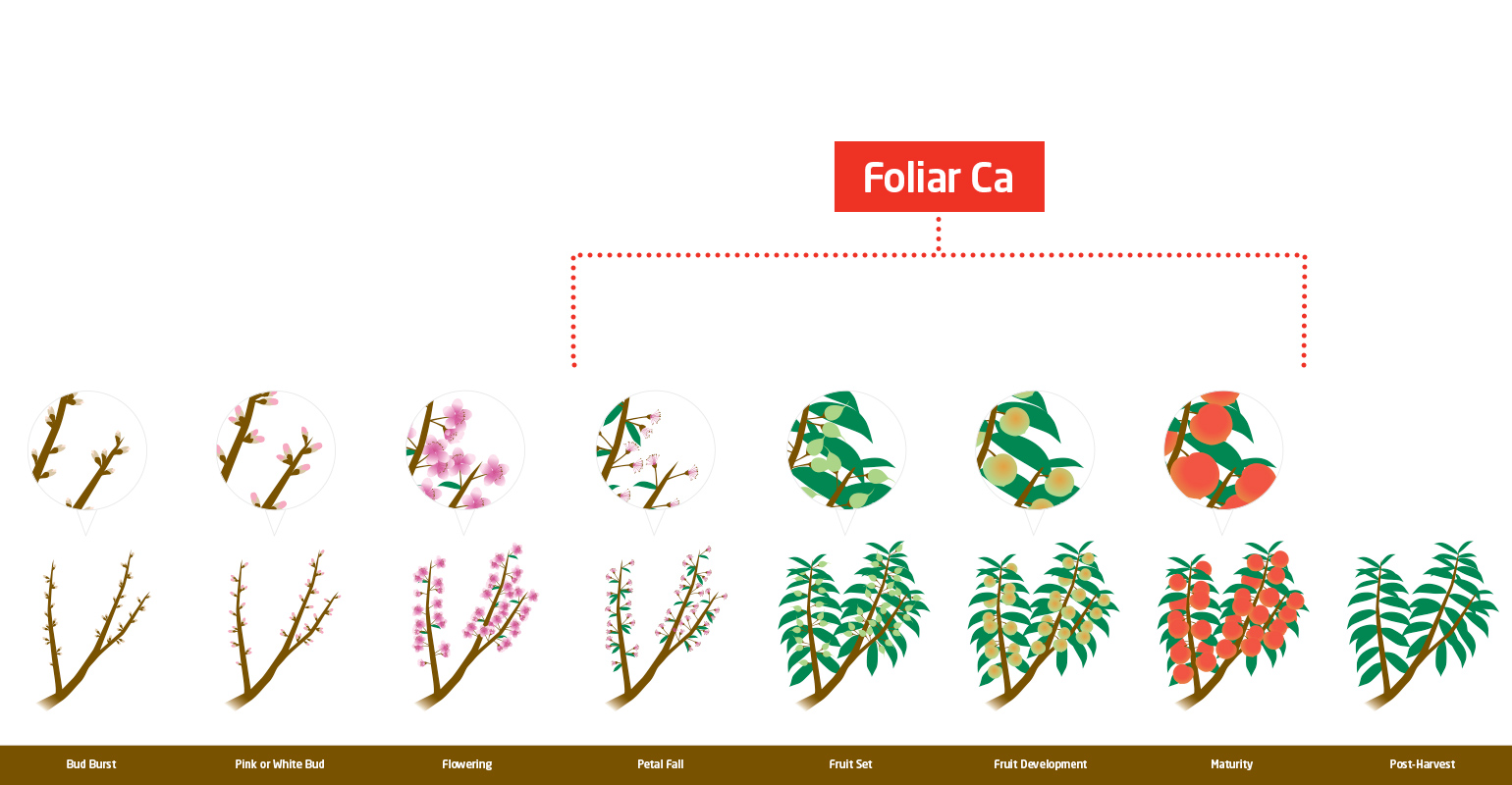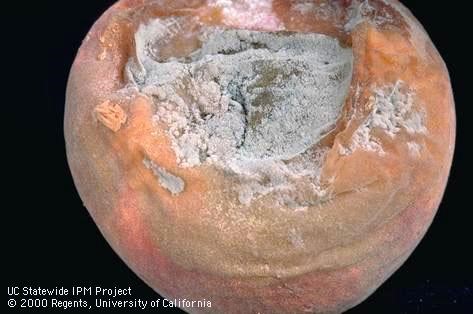Foliar Calcium (Ca) during Fruit Development in Peaches
March 10, 2020
Agronomics / Background
Fruit calcium level is one of the most important factors relating to fruit quality in peach and nectarine production. Calcium plays a critical structural role in the formation and stability of both cell walls and cell membranes. High fruit calcium levels have been shown to increase fruit firmness, reduce bruising during post-harvest handling and improve shelf-life. High fruit Ca in nectarines may also reduce skin cracking prior to harvest.
These advantages occur due to stronger cell walls at harvest and a decrease in activity of enzymes that degrade pectins. Soft rots that occur post-harvest like Botrytis and Monilinia may also be less prevalent in fruit with higher calcium levels.
Conditions Leading to Ca Deficiencies
Most soils used for stone fruit production have adequate levels of calcium for leaf development. Ca related fruit disorders occur due to the lack of mobility of Ca within the plant. Early in fruit development, Ca will move through the transpiration stream via the xylem directly from the soil into the fruit. Excess early season vegetative growth due to high nitrogen levels can lead to an imbalance of too much Ca going to the leaves and not enough into the fruit. Low soil moisture and/or high heat will also diminish Ca uptake from the soil.
As the fruit gets larger, the xylem delivery into the fruit will be cutoff and only the phloem will be able to supply the fruit. Calcium is completely immobile in the phloem so from this point forward only foliar calcium applications that directly contact the fruit will be able to increase fruit Ca levels.
Desired Ca Tissue Test Values
During the summer, Ca levels in mid-shoot leaves should be around 1.5-2.7%. However, this may not be a good indicator of how much calcium actually got into the fruit where it is most needed in stone fruit. Analyzing fruit calcium levels can be helpful in predicting Ca related disorders, but it varies between varieties. It is much more reliable to examine past effects of cultural and fertility practices on actual fruit quality parameters like firmness.
Key Application Timings and Rates
Foliar calcium applications can begin as early as petal fall. Early applications may be especially advantageous if conditions for soil uptake are impaired or if there is excess early season shoot growth. Most cultivars will benefit from at least 2-3 foliar applications. For varieties and/or locations more susceptible to soft fruit, 6 or more sprays may be needed. These should be spaced out throughout the fruit sizing period in order to maintain adequate fruit Ca concentration as the fruit get larger.
BRANDT Products
BRANDT has several foliar calcium formulations that are highly effective and provide good crop safety:
- Foli-Cal®
- BRANDT® Manni-Plex® Cal Zn
- BRANDT Manni-Plex Cal Mag
- BRANDT Manni-Plex Cal-B
These formulations are all complexed with sugar alcohols to improve nutrient delivery.
BRANDT® Organiplex® 8% Ca is an amino acid complex and is approved for organic use.
For all these formulations, 1-2 quarts per acre per application will work well.

Nutrient Deficiency Illustration
Monilinia fruit rot (University of California, IPM)

